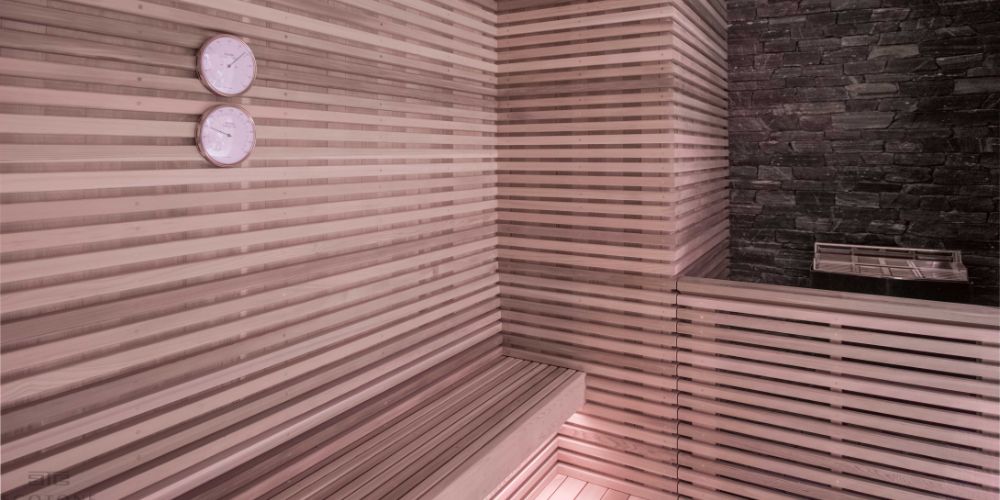When you’re designing and building a sauna, the choice of wood has a huge impact on the final product. Sauna wood not only needs to look aesthetically pleasing, but should also be resistant to decay, have a pleasant smell, and maintain a comfortable temperature for direct skin contact.
Ecotone has a decade of experience design and installing saunas in New York City. Using those years of rich experience, our experts have put together a list of the best kinds of wood for sauna construction.
1. Western Red Cedar
Our first choice for saunas should surely be the Western Red Cedar. It has a nice colorful appearance that consists of various hues. Along with stability, cedar persists the quality of being soft yet resistant to warping under heat and humidity changes. Its low density makes it a good insulator and it also has the quality of being quickly heated as well as quickly cooled down. Thus you can feel great comfort while sitting against this wood otherwise any normal wood having high density would radiate so much heat that it would burn you. Also, unlike any other type of sapwood, cedar does not bleed pitch and its greatest quality is high resistance towards decay and fungus.
On the other hand, an infrared sauna is generally set up in a wooden or plastic box where infrared ceramic, carbon panel, or Incoloy heaters are used to emit infrared light to heat the sauna space. The heat is actually experienced as radiant heat caused by the absorption of infrared light by our skin cells. The atmosphere of this sauna ideally has 50ᵒC to 60ᵒC temperature with no in-built humidity. However, a humid atmosphere can be created by a separate steam generator.
2. Redwood
Though Redwood can be considered as almost similar to the Western Red Cedar, two factors take it down to the second position in our preference. The first one is the decaying of its color. By the time of installation, it has a beautiful red color but, as time passes, the reaction of its acid with the body oil and perspiration causes its color to turn into dirty grey. Also, during the initial period after its installation, it can leech temporary red color into your skin. The second reason behind its comparatively lesser impression is its higher cost than Western Red Cedar.
Looking for a sauna designer?
Ecotone’s professional sauna designers and builders can help you create the perfect sauna!
3. Common Aspen (Populus Tremula)
It is a broad-leafed tree that belongs to the willow family and is mainly found around Europe, Asia, and Northern Africa. Its qualities of not secreting resin, not creating splinters, or not getting too hot make it an ideal choice for making sauna benches. Its characteristics are its smooth texture and light tone. They give it an attractive look making it perfect for painting. As a result, it is also used for interior and exterior walls.
4. Alaskan Yellow Cedar
Though it is named Alaskan Yellow Cedar, it is actually one type of Cypress tree. Western Native American tribes once used this wood to create fashionable totem poles due to its resistance to decay and fungus. Its attractive yellow color is the main reason behind its extensive use in sauna design and construction. Though it has a nice aroma, it is not as rich or pleasant as Western Red Cedar.
5. Western Hemlock
It has comparatively less resistance towards decay than the other popular woods. It also has a tendency to expand a bit. Usually, it emits a faint sour smell when it is fresh. However, this wood is chosen to build a sauna due to its strong nature.
Final Thoughts
These are some of the best choices among woods when you are planning to build a sauna. Ecotone is one of the greatest names for the best works related to spa, garden, sauna, etc. in Brooklyn, New York, and its surroundings. To know more about us and to pick your choice from our wide range of services, feel free to contact us anytime.




